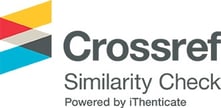Prediksi Gagal Jantung Menggunakan Artificial Neural Network
DOI:
https://doi.org/10.33020/saintekom.v13i1.379Keywords:
heart failure prediction, artificial neural networks, machine learningAbstract
Cardiovascular disease or heart problems are the leading cause of death worldwide. According to WHO (World Health Organization) every year there are more than 17.9 million deaths worldwide. In previous studies, there have been many studies related to the application of machine learning to predict heart failure and obtained quite good results, ranging from 85 percent to 90 percent, with sophisticated models optimized using neural networks. In this research, experiments were carried out using similar architectures based on the state of the art from previous research, namely Artificial Neural Networks by conducting several hyperparameter tests, namely the number of hidden layers and the number of neuron units in the hidden layer. Based on the test results, the Artificial Neural Network model get the best results by implementing 2 hidden layers with 15 units of neurons in the first hidden layer and 10 units of neurons in the second hidden layer. This model get accuracy on data testing of 92,032% and AUC of 93%.
Downloads
References
Amin, M. S., Chiam, Y. K., & Varathan, K. D. (2019). Identification of significant features and data mining techniques in predicting heart disease. Telematics and Informatics, 36, 82–93. https://doi.org/10.1016/j.tele.2018.11.007
Anitha, S., & Sridevi, N. (2019). HEART DISEASE PREDICTION USING DATA MINING TECHNIQUES. In Journal of Analysis and Computation. www.ijaconline.com
Gaziano, T. A., Bitton, A., Anand, S., Abrahams-Gessel, S., & Murphy, A. (2010). Growing Epidemic of Coronary Heart Disease in Low- and Middle-Income Countries. Current Problems in Cardiology, 35(2), 72–115. https://doi.org/10.1016/j.cpcardiol.2009.10.002
Kaggle. (n.d.). https://www.kaggle.com/datasets
Mohan, S., Thirumalai, C., & Srivastava, G. (2019). Effective heart disease prediction using hybrid machine learning techniques. IEEE Access, 7, 81542–81554. https://doi.org/10.1109/ACCESS.2019.2923707
Patel, B. C., & Sinha, G. R. (2015). Reliable Computer-aided Diagnosis System using Region based Segmentation of Mammographic Breast Cancer Images. Mathematical Methods and Systems in Science and Engineering, 296.
Powers, D. M. W., & Ailab. (2020). EVALUATION: FROM PRECISION, RECALL AND F-MEASURE TO ROC, INFORMEDNESS, MARKEDNESS & CORRELATION.
Prasetyo, S. Y. (2023). SARS-CoV-2 Detection From Lung CT-scan Images Using Fine Tuning Concept on Deep-CNN Pretrained Model. CESS (Journal of Computing Engineering, System and Science), 8(1), 101–112. www.jurnal.unimed.ac.id
Prasetyo, S. Y., & Nabiilah, G. Z. (2023). PERBANDINGAN MODEL MACHINE LEARNING PADA KLASIFIKASI TUMOR OTAK MENGGUNAKAN FITUR DISCRETE COSINE TRANSFORM. Jurnal Teknologi Terpadu, 9(1). https://journal.nurulfikri.ac.id/index.php/jtt
Prasetyo, S. Y., Nabiilah, G. Z., & Nabila Izdihar, Z. (2022). Age Estimation from Face Image using Discrete Cosine Transform Feature and Artificial Neural Network.
Seckeler, M. D., & Hoke, T. R. (2011). The worldwide epidemiology of acute rheumatic fever and rheumatic heart disease. In Clinical Epidemiology (Vol. 3, Issue 1, pp. 67–84). https://doi.org/10.2147/CLEP.S12977
Sharma, S., & Parmar, M. (2020). Heart Diseases Prediction using Deep Learning Neural Network Model. International Journal of Innovative Technology and Exploring Engineering, 9(3), 2244–2248. https://doi.org/10.35940/ijitee.C9009.019320
Singh, A., & Kumar, R. (2020). Heart Disease Prediction Using Machine Learning Algorithms. International Conference on Electrical and Electronics Engineering, 452–457.
Wahono, R. S., Herman, N. S., & Ahmad, S. (2014). A comparison framework of classification models for software defect prediction. Advanced Science Letters, 20(10–12), 1945–1950. https://doi.org/10.1166/asl.2014.5640
Downloads
Published
How to Cite
Issue
Section
License
Copyright (c) 2023 Simeon Yuda Prasetyo

This work is licensed under a Creative Commons Attribution-ShareAlike 4.0 International License.
Copyright :
By submitting manuscripts to Jurnal Saintekom : Sains, Teknologi, Komputer dan Manajemen, the author agrees with this policy. No specific document approval is required.
- The copyright in each article belongs to the author.
- Authors retain all their rights to the published work, not limited to the rights set forth in this page.
- Authors acknowledge that Saintekom Journal: Science, Technology, Computers and Management as the first to publish under the Creative Commons Attribution 4.0 International license (CC BY-SA).
- The author may submit the paper separately, arrange for non-exclusive distribution of the manuscript that has been published in this journal into other versions (e.g. sent to the author's institutional respository, publication into a book, etc.), by acknowledging that the manuscript has been first published Jurnal Saintekom : Sains, Teknologi, Komputer dan Manajemen;
- The author warrants that the article is original, written by the named author, has not been previously published, contains no unlawful statements, does not infringe the rights of others, is subject to copyright exclusively held by the author.
- If the article is jointly prepared by more than one author, each author submitting the manuscript warrants that he or she has been authorized by all co-authors to agree to copyright and license notices (agreements) on their behalf, and agrees to inform co-authors of the terms of this policy. Jurnal Saintekom : Sains, Teknologi, Komputer dan Manajemen will not be held liable for anything that may arise due to internal author disputes.
Lisensi :
Jurnal Saintekom : Sains, Teknologi, Komputer dan Manajemen is published under the terms of the Creative Commons Attribution 4.0 International License (CC BY-SA). This license permits anyone to:.
- Share - copy and redistribute this material in any form or format;
- Adaptation - modify, alter, and create derivatives of this material for any purpose.
- Attribution - you must give appropriate credit, include a link to the license, and state that changes have been made. You may do this in any appropriate manner, but it does not imply that the licensor endorses you or your use.
- Similar Sharing - If you modify, alter, or create a derivative of this material, you must distribute your contribution under the same license as the original material.







